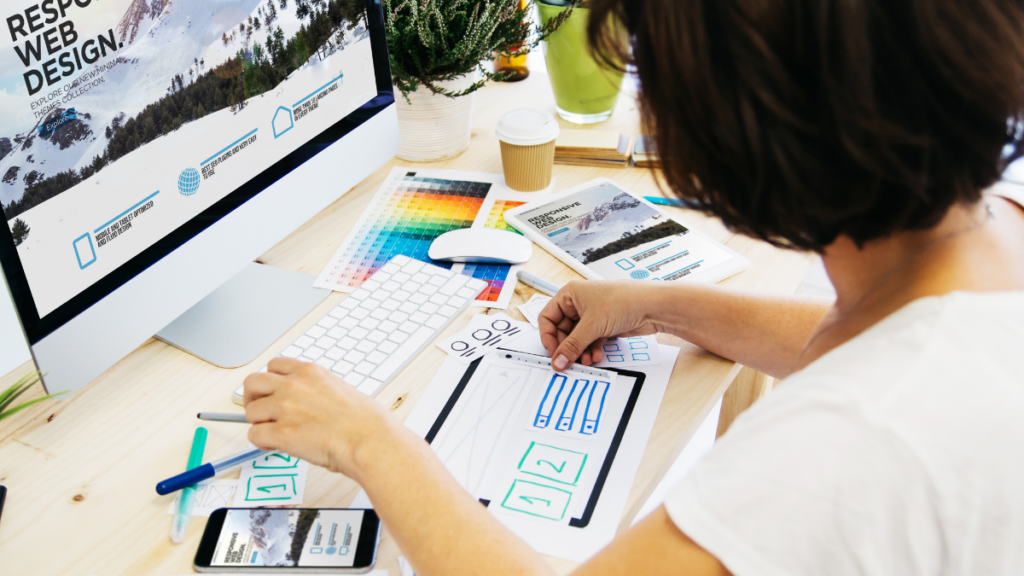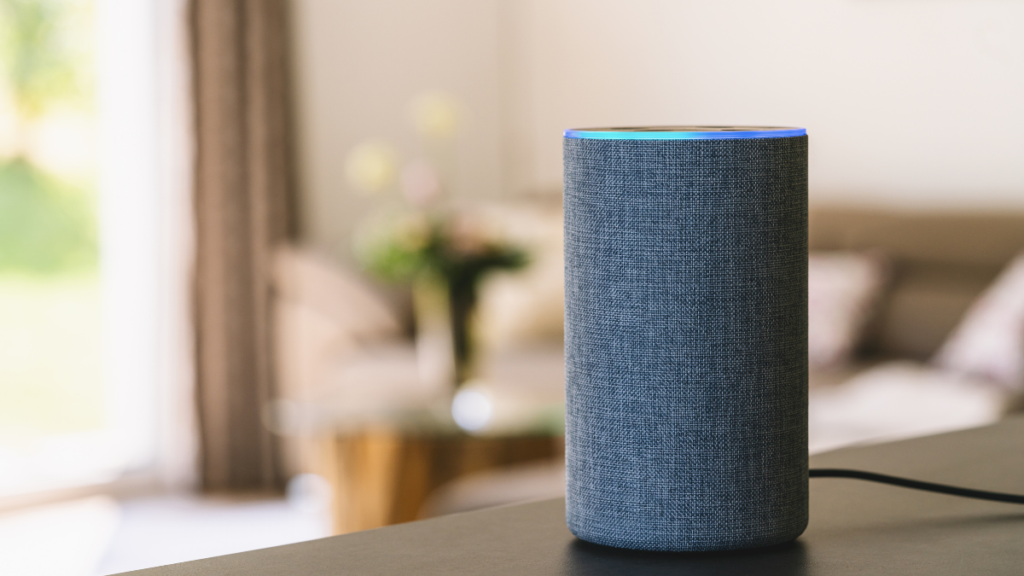2.14 billion. That’s how many people are expected to buy goods and services online in 2021.1 So you’re probably keen to know what web design features are most likely to encourage those shoppers to visit your website. Particularly as 94% of users’ first impressions of a website are design related.2
So without further ado, here’s our guide to the web design trends that will help set your website apart and keep shoppers engaged in 2021…and beyond.
Contents
- Immersive digital experiences
- Customisable user interfaces
- Personalisation
- Virtual reality and augmented reality
- Touchless controls
- Micro animations and micro-interactions
- Hyper-realistic animations and illustrations
- Imperfection
- Make us your web design trend for 2021
Immersive digital experiences

The old saying that your website is your shop window has never been more apt than during the coronavirus pandemic. For many businesses affected by lockdown, their online presence became their only presence. So it’s no surprise that brands are looking for new and exciting ways to bring their brand to life online.
So we expect to see more virtual reality (VR) and augmented reality (AR) online over the coming year, particularly as the barrier to entry has become easier with Apple’s ARKit framework, which lets you build ‘unparalleled augmented reality experiences for hundreds of millions of users on iOS and iPadOS.’3
In the absence of real world experiences, both VR and AR offer immersive, stimulating digital experiences that replicate ‘being there’. This makes it a great choice for brands looking to ‘host’ events, such as a product launch, talk, or even a concert.
One recent example that utilised this technology is Prada’s Spring Summer 2021 catwalk show, which offered fashion fans a live 3D experience. Another out of this world example of what can be achieved with AR is TIME’s incredible Apollo 11 ‘Landing on the Moon’ Experience. Check it out here. One small step for man, one giant leap for AR.
Customisable user interfaces
The point at which a human and computer interact is called a user interface (UI). In an age of personalised phone holders and ringtones, more and more brands are offering a personalised web experience. For example:
- You can replace Google’s famous white space with a background image of your choice
- You can add a custom profile picture on Netflix (ours is Johnny from Cobra Kai)
- You can opt for battery-saving, easy-on-the-eye dark mode in a range of apps such as Gmail
This trend for making users feel part of the creative process will continue in 2021, with brands offering more customisable features that reflect a user’s unique taste and style. This includes the ability to change the colour theme or change the font size, which helps make websites more accessible.

Personalisation
If you’re an Amazon shopper, you’ll probably have noticed that your experience is personalised with recommendations based on your shopping history. This is likely to become more common as Amazon has released ‘Amazon Personalize‘, which lets vendors on its marketplace use the same machine learning (ML) technology it uses to offer shoppers ‘real-time personalized recommendations.’
Amazon isn’t alone though. More and more brands are using ML to offer personalised user interfaces designed to favour the habits and behaviours of shoppers.
For instance, Netflix’s algorithms don’t just personalise the recommended movies on your account, they also personalise the cover art for those movies based on your viewing habits. Speaking on the Netflix Tech Blog, Ashok Chandrashekar, Fernando Amat, Justin Basilico and Tony Jebara explained, “If we present that perfect image on your homepage (and as they say: an image is worth a thousand words), then maybe, just maybe, you will give it a try.”4
The homepage of a website is where we’re most likely to see more personalisation creeping in, in 2021, as presenting content that matches their habits (based on data from the likes of Google Analytics, AI, and user questionnaires) is a good way to grab a visitor’s attention and help them engage with your brand.
Virtual reality and augmented reality
The idea of creating simulated environments has been around since the 1800s, but it wasn’t until Ivan Sutherland invented ‘the Ultimate Display’ in 1965 that the world had a ‘window into a virtual world’.5 Today, smartphone technology means that many of us have a ‘window into a virtual world’ in the palm of our hands.
Virtual reality and augmented reality is becoming increasingly common in the ecommerce world. Nike introduced an AR tool on their app that lets you accurately measure your feet, and IKEA’s Place app scans a room’s dimensions to let shoppers see how furniture would fit in their homes with 98% accuracy.6
With 70% of online shoppers more loyal to brands incorporating AR into their shopping experience, and 61% preferring to buy from sites offering AR technology7 this trend is only set to rise. Whether it’s 360 virtual car showrooms or virtual fitting rooms, the options are ‘virtually’ limitless.

Touchless Controls
In the wake of the coronavirus pandemic, we’re more conscious than ever of touching shared surfaces. As a result, touchless technology – ways of interacting with technology without physically touching it – is on the rise.
Voice interaction
Why type it when you can say it? That’s the appeal of voice interaction. Whether it’s using technology such as Amazon’s Alexa, Siri, or Google Assistant, or speaking to a chatbot on a website, voice control is shaping the future of shopping.
It’s estimated that 50% of searches were performed with voice control in 20208 and in just three years, Alexa’s skill set has grown from 130 skills to over 100,000 skills.9 The voice and speech recognition market is expected to grow 17.2% annually to reach $26.8 billion in 2025.10
Air gesture controls
Air gestures might sound like something road ragers do when you cut them off in traffic, but they’re actually a way of controlling your phone without touching it. Still a relatively new technology, this feature has been introduced by the likes of Samsung whose Air Gesture sensor lets users accept calls and scroll web pages using hand movements.
When the end goal is to create a positive user experience, a combination of voice and air gestures creates a seamless and easy-to-use interaction.
Micro animations and illustrations
When it comes to effective web design, it’s the little things that matter. That’s why micro animations and interactions (short animations or vibrations that are triggered by a user’s actions such as pressing a button) are vital additions as they improve the user experience, help with navigation, and are pleasing on the eye.
These micro surprises are also a great way to distinguish your website with a touch of brand personality.
Hyper-realistic animations and illustrations
It’s not just VR and AR that will be bringing websites to life in 2021. Realistic animations and illustrations are an increasingly popular way of enticing users to your site as the motion of 3D graphics is an engaging and effective way of demonstrating what you do. This is particularly effective in ecommerce as it allows shoppers to visibly inspect a product from every angle much as they might do in-store.
Imperfection
Nothing is left to chance with web design. As such, it’s traditionally been something of an exact science with block or grid-based layouts containing high-quality images having become rather familiar.
Imperfection, by contrast, offers something different. It’s the process of purposely using blurred imagery or unaligned text and images to make a statement. As it looks different to the norm, it can be more memorable and make your brand stand out.

Make Code23 your web design trend for 2021
If you’ve enjoyed this web design trends guide, then we’re pretty sure you’ll enjoy our guide to the tech trends to look out for in 2021 too.
Whatever your web design plans are for 2021, as web design and development specialists, we’d love to help.
To get you started, discover how good UX design will improve your Google ranking, marvel at the benefits of UX design for your business, or get in touch for a good old chat.
References
- https://www.statista.com/
- https://www.socialmediatoday.com/
- https://developer.apple.com/augmented-reality/
- https://netflixtechblog.com
- https://www.fi.edu/virtual-reality/history-of-virtual-reality
- https://techcrunch.com/
- https://www.bigcommerce.co.uk/
- https://quoracreative.com/
- https://www.statista.com/
- https://www.globenewswire.com/

Leave a Reply